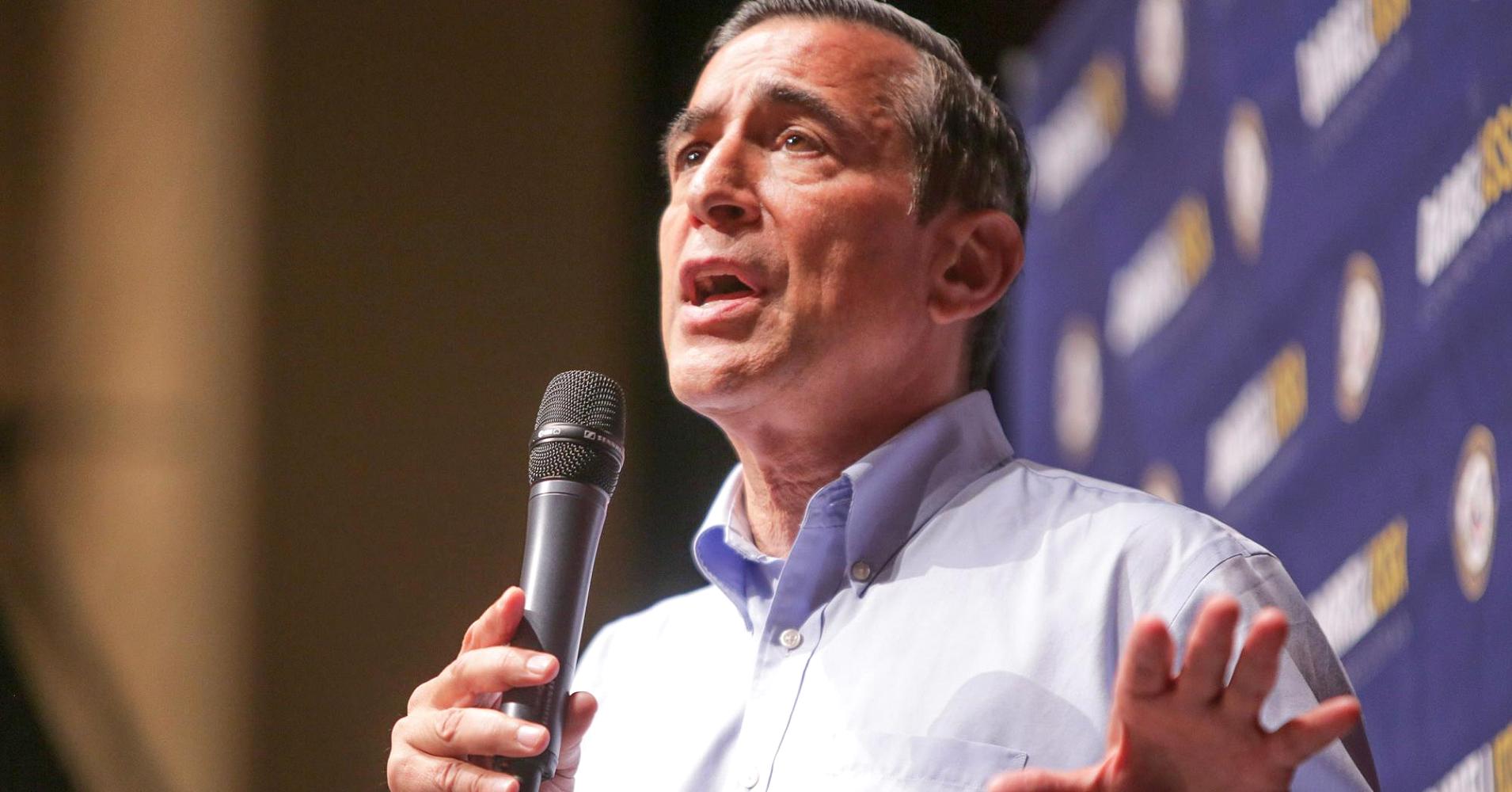
The race to replace retiring California Republican Rep. Darrell Issa is shaping up to be the costliest regular congressional contest in the nation, according to OpenSecrets.org.
There are 16 candidates vying for the seat in California’s 49th Congressional District, which includes portions of northern San Diego County and southern Orange County. Despite the district’s long history of being a conservative bastion in the southern part of the state, President Donald Trump actually came in second place in Orange County in the 2016 presidential election to Democrat Hillary Clinton and lost by an even bigger margin in San Diego County.
“The election in the district is a referendum on Trump and Issa,” said Sherry Bebitch Jeffe, a professor of the practice of public policy communication at the University of Southern California’s Sol Price School of Public Policy. Issa, who has been one of Trump’s stalwart backers, supported spending money on a border fence but voted no last year to the House tax-cut bill.
Democrats see the race in the 49th District as a chance to pick up a seat in the midterm elections as they wage a nationwide fight to gain back control of the House of Representatives. The Democrats need to grab 23 seats from Republicans to get a majority in the House.
Nearly $15.3 million has been spent so far by candidates and outside groups for the Issa seat, including more than $9.2 million by four top Democrats who hope to prevail in Tuesday’s “top-two” primary election. There also are four top Republican challengers that together have raised more than $1.8 million.
“Even before Darrell Issa said he wouldn’t run again, a lot of people smelled blood in the water,” said Stephen Goggin, a political science lecturer at San Diego State University. “Given it’s a relatively wealthy district, a lot of the candidates that came out of the woodwork here have a lot of money and other kinds of financial backers behind them.”
Under California’s top-two primary system in place since 2012, the two finishers getting the most votes will go on to the runoff election in November.
The latest polling shows GOP candidate Diane Harkey, a state tax board member and former mayor of Dana Point, as the top candidate, with 24 percent support, according to a SurveyUSA poll conducted for the San Diego Union-Tribune and San Diego’s 10News. She is followed by two Democrats who each got 11 percent, attorney Doug Applegate and former Obama State Department contractor Sara Jacobs, and Democratic attorney Mike Levin, who got 10 percent.
Goggin said the candidates also have “garnered quite a bit of attention in funding from outside the district. It doesn’t really surprise me, since that seat has spent a lot before, and they’re spending a lot this time too.”
Jacobs is the granddaughter of Irwin Jacobs, the billionaire who co-founded telecommunications giant Qualcomm. Her grandfather donated more than $1.2 million to a group affiliated with Emily’s List, a PAC that supports Democratic pro-choice women candidates. A group linked to the PAC also helped in a media blitz for candidate Jacobs.
At the same time, the Democratic Congressional Campaign Committee spent around $1.6 million on ads knocking GOP candidate Rocky Chavez, a state Assembly member who now trails Harkey in the latest polling. There’s also been more than $900,000 spent by the American Future Fund, an Iowa-based conservative political nonprofit, to boost Harkey and Chavez.
Jacobs’ campaign has raised in excess of $2.2 million so far, while her Democratic challenger real estate investor Paul Kerr has raised more than $4.4 million. Levin has raised around $1.7 million and Applegate nearly $890,000. Applegate, a retired Marine colonel, lost the congressional race in 2016 to Issa by just a few thousand votes.
As for the GOP candidates, Brian Maryott, the mayor pro tem of San Juan Capistrano, has raised more than $742,000, Harkey nearly $475,000, San Diego County Supervisor Kristin Gaspar about $356,000 and Chavez less than $240,000.
Gaspar was part of a group of local officials from California who were invited last month to visit the White House to talk to Trump about opposition to the state’s so-called sanctuary laws. San Diego County’s Board of Supervisors took action recently against the laws, which are designed to protect undocumented immigrants. Orange County also has come out against sanctuary legislation along with more than 30 other local jurisdictions around the state.
Even though Gaspar was seen with Trump at the anti-sanctuary-law roundtable last month, it may not be enough to help her place second in the congressional race. The latest polling shows her garnering just 5 percent of the vote, trailing seven other candidates.

